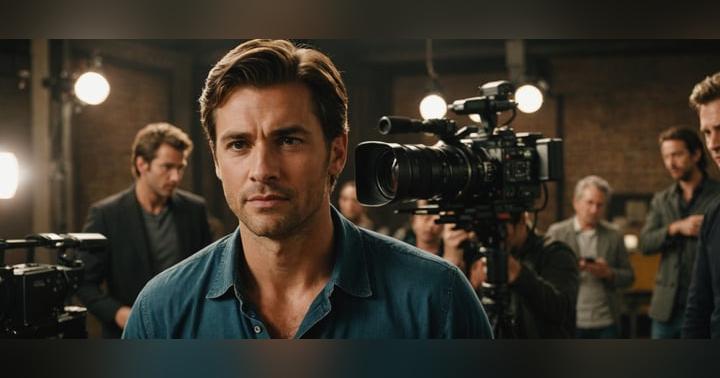The Mafia’s Control of New York's Gay Bars: A Hidden Chapter in LGBTQ+ History

A Whole New Meaning to Leave the Gun, Take the Cannoli
When most people hear the word "Mafia," they likely envision the world of The Godfather or The Sopranos, iconic images of tough, masculine, and often violent men running organized crime empires. But few would immediately think of the Mafia as a player in New York City's gay bar scene during the 1960s. However, for nearly a decade, the Mafia had a strategic stranglehold over these spaces, controlling much of the gay nightlife in New York, especially in Greenwich Village.
It wasn’t because the Mafia was an ally of the LGBTQ+ community. Their motives were purely financial, capitalizing on the legal grey areas surrounding gay establishments. Today, this part of history has largely been forgotten or even erased, but it's a critical chapter that reveals a complex relationship between organized crime, police corruption, and LGBTQ+ oppression.
The Rise of Gay Bars as Safe Spaces
Before delving into the Mafia’s involvement, it’s important to understand the significance of gay bars in American history. These establishments began to pop up as early as the 1930s, functioning as some of the only safe spaces for LGBTQ+ individuals to gather and socialize without fear. Despite the deeply ingrained homophobia of the era, places like Café Lafitte in Exile in New Orleans and the White Horse Inn in Oakland were pioneers, offering these marginalized communities a chance to be themselves.
By the 1960s, homosexuality was legal in New York, but that didn’t mean gay bars could operate freely. According to PBS, the State Liquor Authority (SLA) classified establishments that served alcohol to openly gay patrons as “disorderly houses,” making it nearly impossible for bars to obtain liquor licenses. The law didn't outright criminalize being gay, but it made serving gay patrons a criminal act, forcing many gay bars into the underground economy where they were prime targets for police raids. Those raids could be devastating; not only would patrons face legal trouble, but their names would often be published in local papers, ruining their reputations and careers.
The Mafia Sees an Opportunity
Recognizing an opportunity for profit, the Mafia began buying properties across New York City, converting them into gay bars. Under the guise of private "bottle clubs"—establishments that required membership—these bars skirted liquor license requirements and thus avoided police interference. Among the most notorious of these Mafia-owned bars was the Stonewall Inn.
According to History.com, in 1966, Tony Lauria, a young member of the Genovese crime family, bought a burned-down restaurant called Bonnie’s Stonewall and converted it into what would become an infamous gay bar. But Stonewall was not a glamorous, welcoming venue. It was a sleazy dive with watered-down drinks, filthy glasses, and no proper fire exits. Despite its unappealing conditions, it became a haven for the gay community because it was one of the few places they could openly gather and dance.
Police Bribery and Mafia Extortion
The Genovese family profited not only from overpriced, low-quality drinks but also from rampant extortion. In The Stonewall Riots: Coming Out in the Streets, author Gayle E Pitman details how Ed "The Skull" Murphy, a member of the Mafia, would collect patrons' information and blackmail them, threatening to reveal their homosexuality to their families, employers, and communities unless they paid up. For many gay men who were closeted and leading double lives, the fear of being outed was crippling.
Despite this exploitation, Mafia-owned gay bars were still preferable to the constant harassment from police. The Mafia had a close working relationship with the police, paying them between $1,200 and $2,000 a month in bribes. In exchange, the police would tip off the bar owners before conducting raids, allowing them to minimize the damage by timing raids when fewer patrons were present.
Stonewall and the Breaking Point
All of this came to a head on the night of June 28, 1969, during a routine raid on the Stonewall Inn. This time, however, something was different. The police did not warn the bar owners beforehand, and a large crowd was present. Instead of quietly accepting the raid, the patrons fought back, leading to the now-famous Stonewall Riots.
While the riots are often seen as a turning point in the LGBTQ+ rights movement, they were not just a reaction to police harassment—they were also a rebellion against the Mafia’s exploitation of the gay community. The next day, activists distributed flyers throughout the city denouncing both the police and the Mafia's control over gay bars.
The End of Mafia-Controlled Gay Bars
Although the riots were a major step forward for LGBTQ+ rights, it took until the 1980s for the Mafia's monopoly on gay nightlife to be fully dismantled. Phillip Crawford Jr., author of The Mafia and the Gays, explains that federal crackdowns on organized crime, coupled with increased activism from within the gay community, eventually broke the Mafia’s grip. By the time the AIDS crisis hit in the late 1970s and early 1980s, gay men were organizing in new ways, forming activist groups like ACT UP to combat not only the government’s lack of response but also lingering oppression in their own spaces.
A Complicated Legacy
The Mafia’s role in New York’s gay bar scene is a complicated legacy. On one hand, they provided a place for LGBTQ+ people to gather during a time when few other venues would allow it. On the other hand, they exploited the community for profit, using fear and intimidation to keep their grip on these spaces.
The story of the Mafia’s involvement in New York’s gay bars is a reminder that the LGBTQ+ struggle for rights and recognition has always been multifaceted, involving not just a fight against institutional discrimination but also a struggle within their own spaces. This chapter of history, often left untold, sheds light on the resilience of the LGBTQ+ community and their determination to fight for safe, authentic spaces—even when those spaces were far from perfect.
Just as the community stood up to exploitation and injustice then, today’s LGBTQ+ movement must continue speaking out against oppression, ensuring that the fight for equality and safety remains unrelenting and steadfast.
And remember. Every day is all we have, so you've got to make your own happiness.
For more information on this topic, listen to Episode 17. Mobsters & Mos: How the Mafia Owned Gay Nightlife.
Tune into your favorite podcast player every Tuesday for new episodes of A Jaded Gay.


















